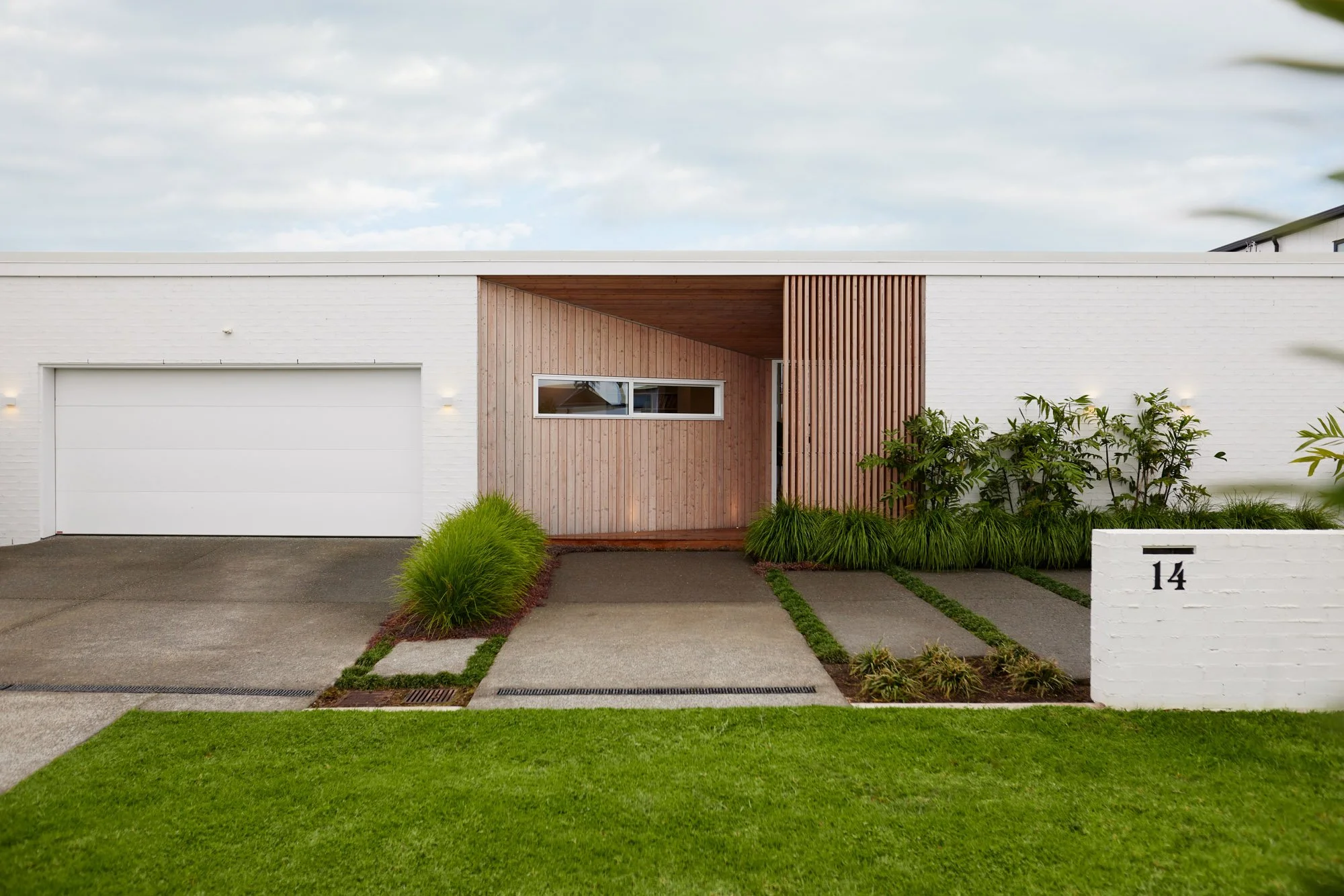This house reminisces on iconic modernist mid-century houses from Richard Neutra, Alvar Aalto and Pierre Koenig.
ADNZ Bay of Plenty Winner 2023 - Residential New Home up to 300 sqm
ADNZ Bay of Plenty Winner 2023 - Residential Interiors
Build: Hepi Gage Construction
Photography: Hunter Studio
Toronia Court House
Located in the suburban context of Palm Springs, a subdivision of Papamoa, this house reminisces on iconic modernist mid-century houses from Richard Neutra, Alvar Aalto and Pierre Koenig.
This blend of architectural influences is both an intrinsic aspect of the design brief and a response to the context, exploring the subtle cues in the subdivision name and theme.
The result is a collected architectural composition, expressing clean lines, a neutral colour palette and strategic use of timber and soft landscaping, striking a balance between restraint, warmth and texture.
The rectilinear and subdued façade is balanced with a trapezoidal subtraction dressed in warm timber weatherboards, denoting the entrance and adding interest to the elevation in the streetscape.
The building form and spatial planning emerge from a diagrammatic process and a response to environmental factors: a rectangular prism extrusion, a subsequent subtraction creating a courtyard and pool area. The result is an "L" shape building, with garage and bedrooms positioned in the south quadrant and living spaces and main bedroom in the northern quadrant interfacing the courtyard.
“The result is a collected architectural composition, expressing clean lines, a neutral colour palette and strategic use of timber and soft landscaping, striking a balance between restraint, warmth and texture.”
ADNZ Awards Judges Citation
“ Ironically located in a NZ suburb called Palm Springs, this house is designed to recall precedents from Neutra and other great modernists. It presents itself with quiet certitude, an elegant affirmation that light and space, articulated with a modest palette of materials, are more than enough to suggest graceful living and comfort. Exquisite composition, mature colour palette, and selective material response create an exceptional interior design that exactly captures the evocation of mid-century modern and the precedents of Palm Springs (USA) architecture. Restrained and carefully designed lighting enlivens the living areas with elegance and sophistication. Passive solar, cross-ventilation, and low-maintenance aspects enhance the user experience and futureproofing for years to come. A very thoughtful, convincing, and successful scheme”
The interior spaces offer restraint with material selection, with warm whites complemented with timber flooring and sarking, bringing a sense of calm and softness. The living area, oriented along the north-south axis, is optimally positioned for cross-ventilation and passive solar heating. Oversized eaves to the west elevation mitigate excessive heat gains, ensuring comfortable temperatures all year round. Low maintenance and durable materials such as painted clay bricks, painted thermally-modified timber weatherboards and exposed Siberian Larch compose the external envelope, prioritising low-embodied carbon. High-performance glass wool insulation and double-glazing low-e joinery units paired with optimum sun orientation ensure thermal comfort for the end users. The living areas are further expanded with generous decks to the east and west offering various opportunities to inhabit space - be it with a built-in seat shaded by densely populated bamboo or under the louvred outdoor living.

























